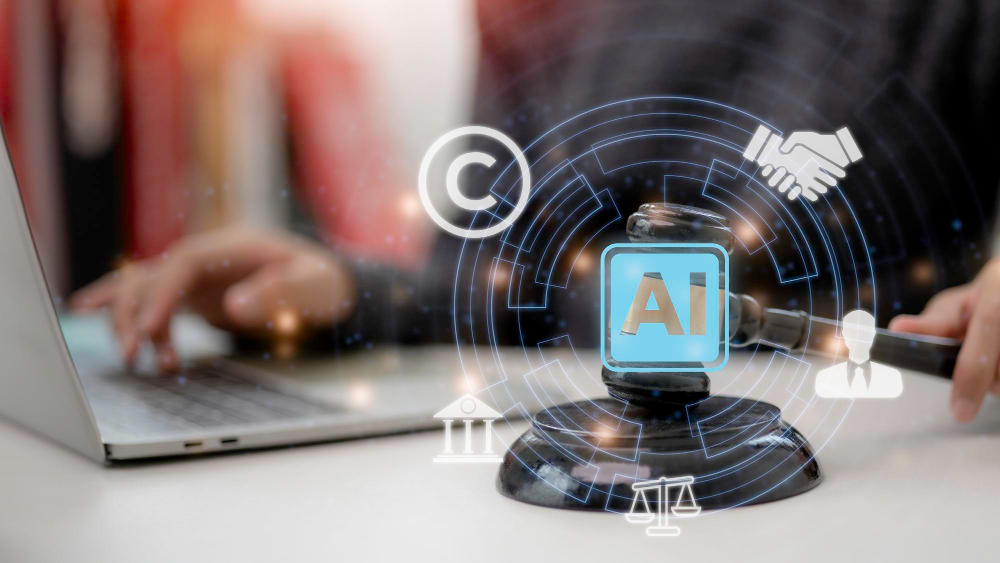
Things are moving fast in AI, rapidly changing things for nearly every industry on the face of the earth-healthcare, finance, retail, and transportation-just to name a few. And as AI technologies come to increasingly play a far deeper part in the world of software development, it’s very clear there’s a very clear need to learn to understand how these legal frameworks governing it will be applied. Balancing innovation with strict legal requirements may make AI regulation and compliance a herculean task for the developer and organization to navigate in the United States. Getting it right is very important because the wrong move might mean losing to fines, lawsuits, and reputational damage.
AI development comes with unique legal challenges beyond the quintessential scope of software development. Some key aspects on which developers and organizations need to keep watch are the following:
As AI systems work upon vast quantities of personal and sensitive data, it happens to be a significant criterion for US-based AI systems to handle. No single federal law governs data privacy, but sector-specific and state-level laws apply. For instance, the California Consumer Privacy Act (CCPA) requires the control of customer information by the customers themselves. The HIPAA sets forth the strict protection of health information. Developing AI systems using strong privacy controls like encryption, anonymization, etc., will be part of the compliance process of these new laws and regulations as well.
One of the widely discussed concerns in AI research is that of biased algorithms. Disciplinary outcomes of biased algorithms can easily surface in hiring, lending, and criminal justice, given that AI systems learn from biased data. As such, legal frameworks like the Civil Rights Act and the Equal Credit Opportunity Act (ECOA) prohibit discrimination, making AI researchers inherently proactive when it comes to minimizing bias in their models. To ensure fairness, ethical as it is, it is also becoming a legally decisive one.
In most AI developments, ownership of rights questions are still pending while evolving. Although AI can create code, designs, and even art without human intervention, no absolute ownership rights were defined by US intellectual property law regarding these creations. Developers should be aware of such uncertainties and take steps to protect their intellectual property while charting unclear laws.
There is also the question of liability when AI performs something wrong—it may be a bad finance recommendation or a wrong medical diagnosis. Accountability in the law is a grey area for AI systems, with no clear rules regarding who is to blame for the decisions made by an autonomous system. This calls for mechanisms in the developed software that provide for human oversight and decision-making to at least partly mitigate legal risks.
Some industries are also strictly regulated to which laws have a profound impact on access to and use of AI. Healthcare, for example, is closely monitored by the US FDA for applications that involve diagnostic and medical devices. Finance falls under the Federal Trade Commission, which dictates how to use lending and investing AI technologies. Developers who are working in regulated industries will need to identify the particular compliance specifications that can help them avoid violative measures.
Because of the complexity of AI regulation, both developers and business use protection. The said can be better managed through the following best practices:
Risk assessments should be conducted with complete scrutiny before actually deploying an AI system to identify potential legal and ethical risks. This practice would ensure that the AI solution is in alignment with relevant legal standards and minimizes the likelihood of any violation related to a regulatory body.
One of the significant difficulties AI is facing now is how many of these models function in a “black box” and do not allow one to understand how they arrive at any decision. Making sure transparency and explainability would provide developers with those necessary pieces of information to help regulators, users, and stakeholders understand how the AI models work. This will greatly help with compliance and increase trust.
The US regulatory environment for AI is constantly improving as some new bills and guidelines emerge regularly. Developers and organizations are expected to be updated with the latest trends in regulations and mold their AI solutions accordingly; hence, this is a necessity as legislators and regulators struggle to catch up with accelerated AI growth.
Best practice in ethical AI hand-in-hand with legislation ensures that properly functioning AI systems, without bias and consistent user privacy, can enable organizations to line up their technologies with existing and future regulations.
Non-compliance with AI can be very costly. Some of the risks involved include:
At Virstack, we believe innovation and compliance go hand in hand. Therefore, our developers, consultants, and legal experts co-collaborate in the process to ensure that all solutions related to AI meet all requirements and are compliant with regulations. We strike best practices for data privacy, fairness, and transparency into every project, meaning our clients stay ahead of the curve legally while leveraging the power of AI to take their business to the next level.
Virstak’s responsible AI development has helped hundreds of customers deploy compliant, scalable, and innovative solutions for a wide range of industries. Become our partner and confidently use us to cut through the tangle of regulation regarding the deployment of AI in software development.
AI regulation and compliance issues in the US are complex but a must in modern software development. As more comes to light around AI, more regulation and more frameworks are developed around this vast new territory. Understanding the main regulatory areas, as well as suitable best practices, can help developers create innovative AI-based systems that are sound as far as both current and future regulations go. A trusted software consultancy such as Virstack, therefore, can be the best ally in navigating your AI initiative for high compliance concerning both legal and ethical requirements to promote sustainable growth and innovation.